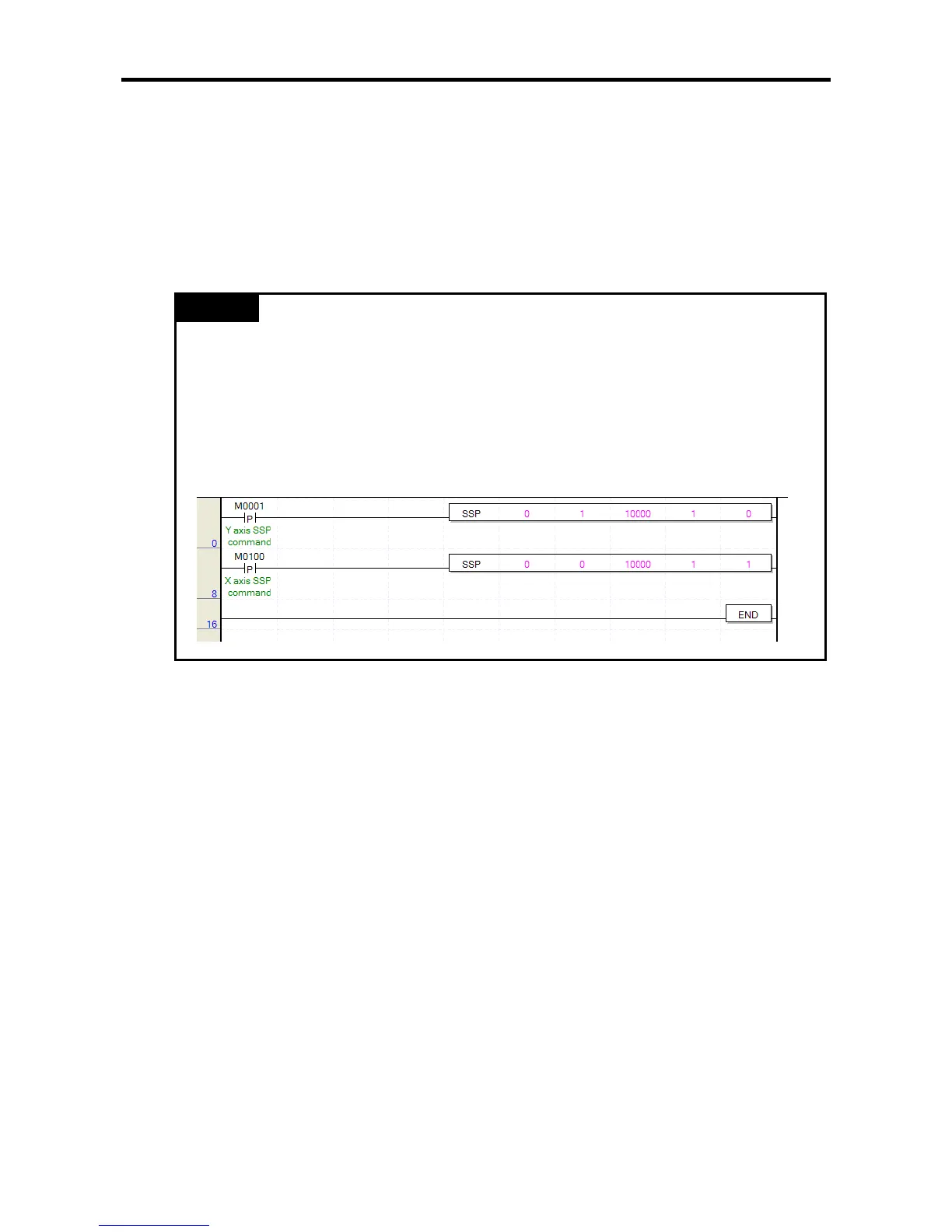Chapter 5 Positioning Instructions
5 - 28
(c) Operation of the Program
• The SSP instruction is executed if there is the rising edge of M0001, which was used as the main
axis position synchronous instruction signal.
Since the second operand is 1 (axis Y), axis Y is the auxiliary axis, and as the fifth operand is
0(axis X), so the main axis is axis X.
• No.1 step of axis X is indirectly started if there is the rising edge of M0002, which is the indirect
starting instruction signal of the main axis.
• When the current position of the main axis during operation becomes 10,000[Pulse], set in the third
operand of the SSP instruction, axis Y, which is the auxiliary axis, starts No. 1 step, which is the
operation step set in the fourth operand of the SSP instruction.
Remark
• When you use the main axis position synchronous instruction, if the axis set as the main axis
has already been started as the main axis position synchronous auxiliary axis, error code 349 is
issued and it is not executed. If the following example, axis Y becomes the auxiliary axis and
axis X becomes the main axis at the rising edge of M0001 and the main axis position
synchronous instruction is issued with axis X being the auxiliary axis and axis Y being the main
axis. In this case, since axis Y used as the main axis, is already being started as the auxiliary
axis of the main axis position synchronous instruction, axis X generates error code 349 and is
not started.

